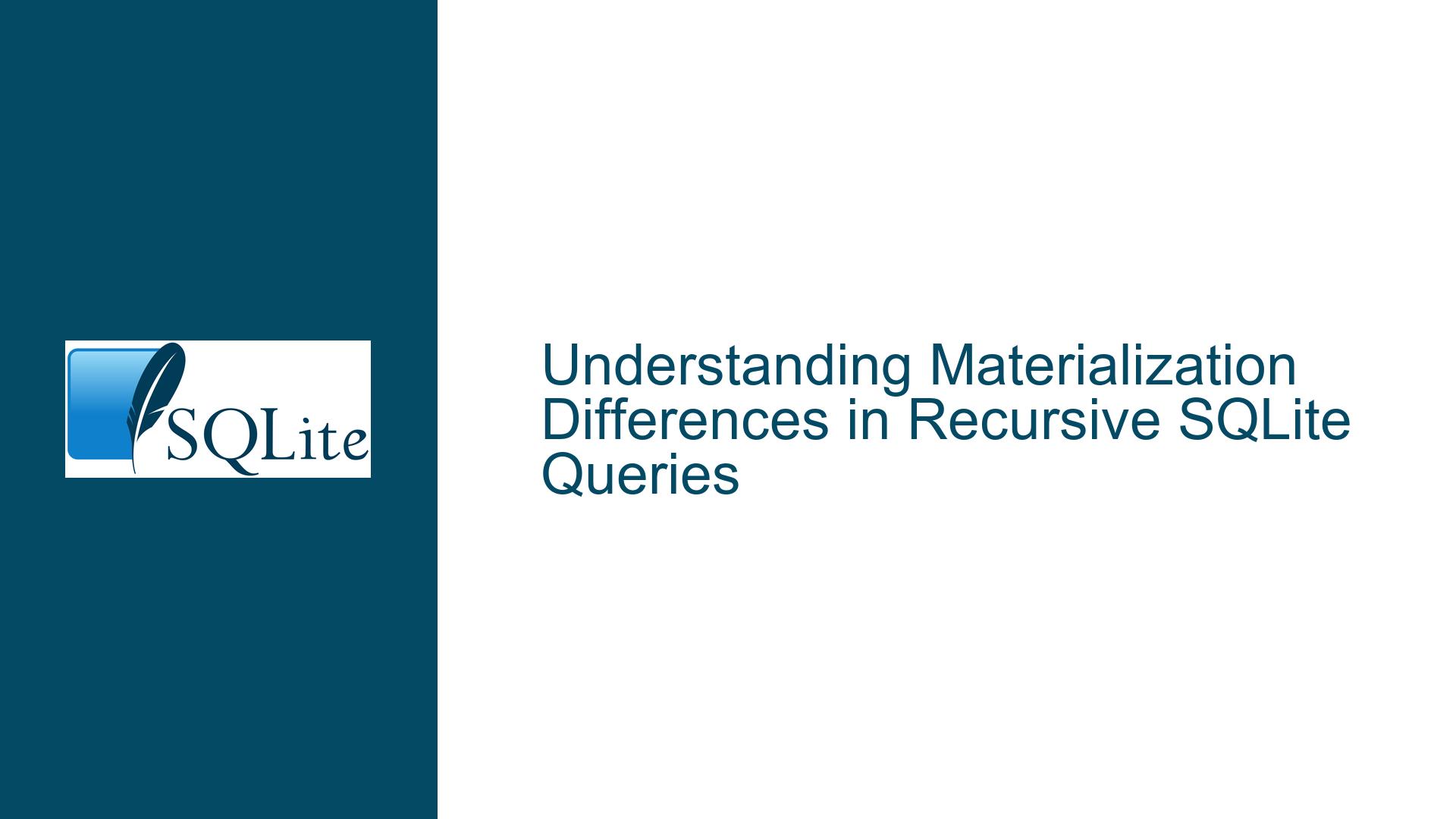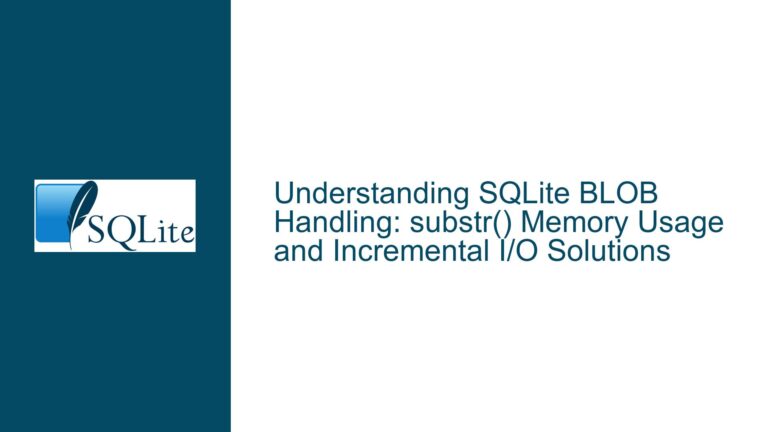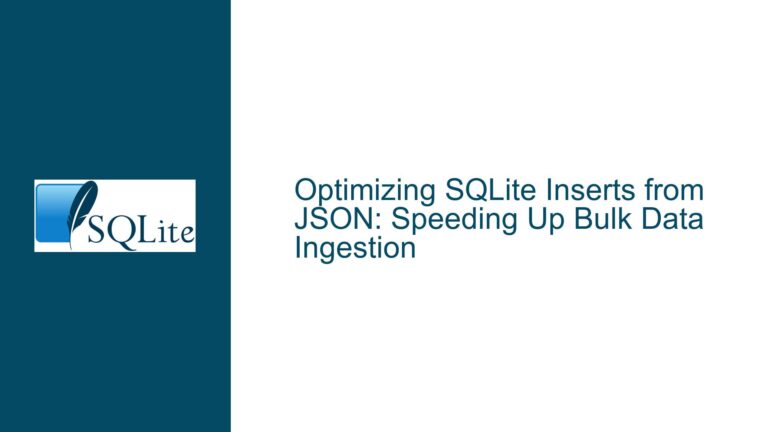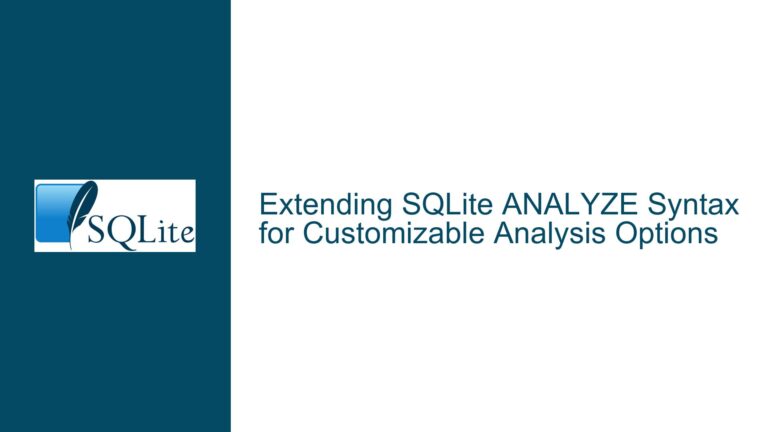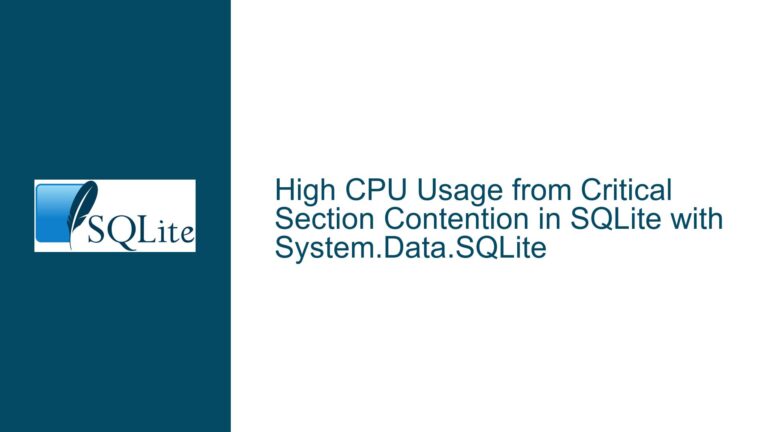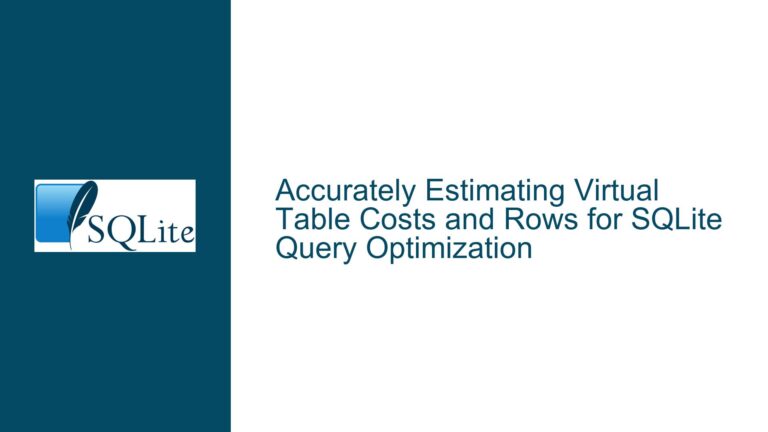Materialization Differences in Recursive SQLite Queries
Recursive Query Materialization Behavior in SQLite
When working with recursive queries in SQLite, understanding how and why certain tables are materialized can be crucial for optimizing performance and ensuring the correctness of your queries. In the provided scenario, two similar recursive queries exhibit different materialization behaviors: one materializes the pieces table, while the other materializes the results table. This discrepancy raises questions about the importance of materialization, the factors influencing SQLite’s decision to materialize specific tables, and whether these differences impact query performance or correctness.
The first query, referred to as the "single-loop" query, materializes the pieces table, which is the primary table where the recursive search occurs. The second query, the "double-loop" query, materializes the results table, which holds the final output of the recursive search. Despite the similarity in their logic, the query plans differ significantly in terms of which tables are materialized. This behavior is influenced by SQLite’s query optimizer, which makes decisions based on the structure of the query, the presence of recursive CTEs (Common Table Expressions), and the estimated cost of materializing specific tables.
Materialization in SQLite refers to the process of storing intermediate results in a temporary table to avoid redundant computations. This can improve performance by reducing the number of times a subquery or recursive CTE is evaluated. However, materialization also introduces overhead, as it requires additional memory and disk space to store the temporary table. The decision to materialize a table is therefore a trade-off between the cost of recomputing the intermediate results and the cost of storing them.
In the single-loop query, the pieces table is materialized because it is the primary table involved in the recursive search. Materializing this table allows SQLite to avoid recomputing the recursive steps multiple times, which can be particularly beneficial if the recursive search involves a large number of iterations. On the other hand, in the double-loop query, the results table is materialized because it holds the final output of the recursive search. Materializing this table ensures that the results are readily available for the final UPDATE statement, which joins the results table with the items_at table.
The difference in materialization behavior between the two queries can be attributed to the way SQLite’s query optimizer evaluates the cost of materializing different tables. In the single-loop query, the optimizer determines that materializing the pieces table is more beneficial because it is involved in the recursive search, which is the most computationally expensive part of the query. In the double-loop query, the optimizer prioritizes materializing the results table because it is the final output of the recursive search and is used in the subsequent UPDATE statement.
Factors Influencing Materialization in Recursive Queries
Several factors influence SQLite’s decision to materialize specific tables in recursive queries. These factors include the structure of the query, the presence of recursive CTEs, the estimated cost of materializing specific tables, and the availability of indexes on the tables involved in the query.
The structure of the query plays a significant role in determining which tables are materialized. In the single-loop query, the recursive search is performed on the pieces table, which is why SQLite chooses to materialize it. In the double-loop query, the recursive search is split into two separate loops, each operating on a different table (pieces_1 and pieces_2). The final results from these loops are combined in the results table, which is why SQLite chooses to materialize it.
The presence of recursive CTEs also influences materialization behavior. Recursive CTEs are evaluated iteratively, with each iteration producing a new set of rows that are added to the result set. Materializing the intermediate results of a recursive CTE can reduce the number of iterations required to compute the final result, which can improve performance. However, materializing the intermediate results also introduces overhead, as it requires additional memory and disk space.
The estimated cost of materializing specific tables is another important factor. SQLite’s query optimizer estimates the cost of materializing a table based on factors such as the size of the table, the complexity of the query, and the availability of indexes. If the optimizer determines that the cost of materializing a table is lower than the cost of recomputing the intermediate results, it will choose to materialize the table. Otherwise, it will avoid materialization.
The availability of indexes on the tables involved in the query can also influence materialization behavior. Indexes can significantly reduce the cost of searching and joining tables, which can make materialization less necessary. In the provided queries, the pt_pointers table is indexed on the doc_id and key columns, which allows SQLite to efficiently search the table without needing to materialize it.
Troubleshooting Materialization Differences in Recursive Queries
When troubleshooting materialization differences in recursive queries, it is important to consider the structure of the query, the presence of recursive CTEs, the estimated cost of materializing specific tables, and the availability of indexes. The following steps can help you identify and resolve issues related to materialization:
Analyze the Query Structure: Examine the structure of the query to identify which tables are involved in the recursive search and which tables hold the final results. Determine whether the query involves a single recursive loop or multiple loops, as this can influence materialization behavior.
Review the Query Plan: Use the
EXPLAIN QUERY PLANstatement to review the query plan and identify which tables are materialized. Pay attention to the order in which tables are accessed and joined, as this can provide insights into why certain tables are materialized.Evaluate the Cost of Materialization: Estimate the cost of materializing specific tables based on factors such as the size of the table, the complexity of the query, and the availability of indexes. Compare the cost of materialization with the cost of recomputing the intermediate results to determine whether materialization is beneficial.
Optimize Indexes: Ensure that the tables involved in the query are properly indexed. Indexes can significantly reduce the cost of searching and joining tables, which can make materialization less necessary. Consider adding indexes on columns that are frequently used in search and join conditions.
Test with Real Data: Test the query with realistic data to evaluate its performance. Use the
ANALYZEstatement to collect statistics on the tables involved in the query, which can help the query optimizer make more accurate cost estimates.Consider Alternative Query Structures: If materialization is causing performance issues, consider restructuring the query to reduce the need for materialization. For example, you may be able to rewrite the query to avoid recursive CTEs or to reduce the number of intermediate results that need to be materialized.
Monitor Query Performance: Monitor the performance of the query over time to identify any changes in materialization behavior. If the query plan changes frequently, it may indicate that the cost estimates are not stable, which can make it difficult to optimize the query.
By following these steps, you can identify and resolve issues related to materialization in recursive queries. Understanding the factors that influence materialization behavior and how to optimize your queries can help you achieve better performance and ensure the correctness of your results.
